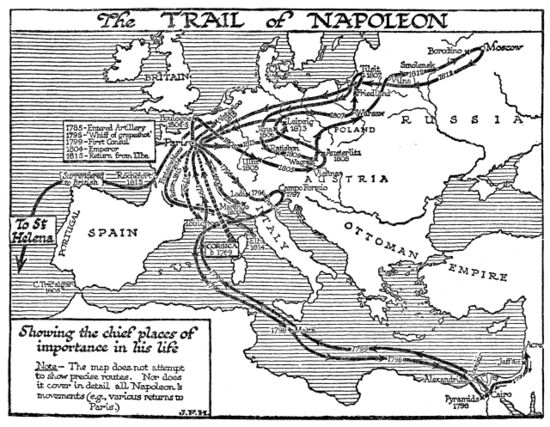imported>Chunbum Park |
imported>John Stephenson |
| (140 intermediate revisions by 5 users not shown) |
| Line 1: |
Line 1: |
| == '''[[National Institute of Standards and Technology]]''' ==
| | {{:{{FeaturedArticleTitle}}}} |
| ''by [[User:Paul Wormer|Paul Wormer]], [[User:Milton Beychok|Milton Beychok]] and [[User:John R. Brews|John R. Brews]]
| | <small> |
| | | ==Footnotes== |
| ----
| |
| | |
| {{Image|NIST Blue Logo.png|right|168px}} | |
| The '''National Institute of Standards and Technology''' (NIST) is a [[United States]] federal agency within the [[U.S. Department of Commerce]].<ref>[http://www.nist.gov/public_affairs/general_information.cfm NIST General Information], from the NIST website.</ref> The institute was founded in 1901 with the aim to advance measurement science, standards, and technology. NIST was known between 1901–1988 as the '''[[National Bureau of Standards]]''' (NBS).
| |
| | |
| NIST has an operating budget of about $1.6 [[Parts-per notation#Summary of large number names|billion]]<ref name=Budget>[http://nist.gov/public_affairs/budget/2010budgetpiechart.cfm NIST Resources Fiscal Year 2010], from the NIST website.</ref> and operates in two locations: [[Gaithersburg, Maryland]], and [[Boulder, Colorado]]. NIST employs a staff of about 2,900 scientists, engineers, technicians, and support and administrative personnel. About 2,600 associates and facility users from academia, industry and other government agencies complement the staff.<ref>[http://www.nist.gov/hrmd/perks.cfm Why Work at NIST?], from the NIST website.</ref>
| |
| | |
| ===History=== | |
| | |
| Article 1, Section 8 of the [[United States Constitution]] grants the [[U.S. Congress]] the power to '''''"To coin money, regulate the value thereof, and of foreign coin, and fix the standard of weights and measures"'''''. In June 1836, almost fifty years after the U. S. Constitution was ratified, the [[U.S. Senate]] and the [[U.S. House of Representatives]] adopted a joint resolution establishing a [[U.S. Office of Weights and Measures]] within the [[U.S. Department of the Treasury]]. From that date until March 1901, the Office of Weights and Measures was administered mostly by the [[U.S. Coast Survey]], later renamed as the [[U.S. Coast and Geodetic Survey]] (USC&GS), within the [[U.S. Department of the Treasury]].<ref>There were some time periods during which the [[U.S. Army]] and/or the [[U.S. Navy]] administered the USC&GS</ref> [[Ferdinand Rudolph Hassler]], a professor of mathematics, served as the head of U.S. Coast Survey as well as the Office of Weights and Measures from 1836 to 1843.<ref>[http://www.dean.usma.edu/math/about/history/hassler.htm Ferdinand Rudolph Hessler]</ref><ref>[http://www.nist.gov/pml/pubs/sp447/index.cfm Weights and Measures Standards of the United States: A brief history], from the NIST website.</ref>
| |
| | |
| ''[[National Institute of Standards and Technology|.... (read more)]]''
| |
| | |
| {| class="wikitable collapsible collapsed" style="width: 90%; float: center; margin: 0.5em 1em 0.8em 0px;"
| |
| |-
| |
| ! style="text-align: center;" | [[National Institute of Standards and Technology#Literature|notes]]
| |
| |-
| |
| |
| |
| {{reflist|2}} | | {{reflist|2}} |
| |}
| | </small> |
Latest revision as of 10:19, 11 September 2020
Napoleon (Napoleon Bonaparte or, after 1804, Napoleon I, Emperor of the French) was a world historic figure and dictator of France from 1799 to 1814. He was the greatest general of his age--perhaps any age, with a sure command of battlefield tactics and campaign strategies, As a civil leader he played a major role in the French Revolution, then ended it when he became dictator in 1799 and Emperor of France in 1804 He modernized the French military, fiscal, political legal and religious systems. He fought an unending series of wars against Britain with a complex, ever-changing coalition of European nations on both sides. Refusing to compromise after his immense defeat in Russia in 1812, he was overwhelmed by a coalition of enemies and abdicated in 1814. In 1815 he returned from exile, took control of France, built a new army, and in 100 days almost succeeded--but was defeated at Waterloo and exiled to a remote island. His image and memory are central to French national identity, but he is despised by the British and Russians and is a controversial figure in Germany and elsewhere in Europe.
Rise to Power
Once the Revolution had begun, so many of the aristocratic officers turned against the Revolutionary government, or were exiled or executed, that a vacuum of senior leadership resulted. Promotions came very quickly now, and loyalty to the Revolution was as important as technical skill; Napoleon had both. His demerits were overlooked as he was twice reinstated, promoted, and allowed to collect his back pay. Paris knew him as an intellectual soldier deeply involved in politics. His first test of military genius came at Toulon in 1793, where the British had seized this key port. Napoleon, an acting Lieutenant-Colonel, used his artillery to force the British to abandon the city. He was immediately promoted by the Jacobin radicals under Robespierre to brigadier-general, joining the ranks of several brilliant young generals. He played a major role in defending Paris itself from counter-revolutionaries, and became the operational planner for the Army of Italy and planned two successful attacks in April 1794. He married Josephine (Rose de Beauharnais) in 1796, after falling violently in love with the older aristocratic widow.[1]
- ↑ Englund pp 63-73, 91-2, 97-8
